F C Grandin
Is bisphenol S a safer alternative to bisphenol A in terms of potential fetal exposure ? Placental transfer across the perfused human placenta
Grandin, F C; Lacroix, M Z; Gayrard, V; Viguié, C; Mila, H; De Place, A; Vayssière, C; Morin, M; Corbett, J; Gayrard, C; Gély, C A; Toutain, P-L; Picard-Hagen, N
Authors
M Z Lacroix
V Gayrard
C Viguié
H Mila
A De Place
C Vayssière
M Morin
J Corbett
C Gayrard
C A Gély
P-L Toutain
N Picard-Hagen
Abstract
The aim of our study was to evaluate the bidirectional transfer of Bisphenol S (BPS) and its main metabolite, BPS Glucuronide (BPSG), using the model of perfused human placenta and to compare the obtained values with those of Bisphenol A (BPA) and BPA Glucuronide.
Fourteen placentas at term were perfused in an open dual circuit with deuterated BPS (1 and 5 μM) and non-labelled BPSG (2.5 μM) and a freely diffusing marker antipyrine (800 ng/ml) in the presence of albumin (25 mg/ml). In a second experiment, the potential role of P-glycoprotein in the active efflux of BPS across the placental barrier was studied using the well-established P-glycoprotein inhibitor, PSC833 (2 and 4 μM).
Placental transfer of BPS was much lower than that of BPA in both directions. The placental clearance index of BPS in the materno-fetal direction was three times lower than in the opposite direction, strongly suggesting some active efflux transport. However, our results show that P-glycoprotein is not involved in limiting the materno-fetal transfer of BPS. Placental transfer of BPSG in the fetal compartment was almost non-existent indicating that, in the fetal compartment, BPSG originates mainly from feto-placental metabolism. The feto-maternal clearance index for BPSG was 20-fold higher than the materno-fetal index.
We conclude that the blood-placental barrier is much more efficient in limiting fetal exposure to BPS than to BPA, indicating that the placenta has a crucial role in protecting the human fetus from BPS exposure.
Citation
Grandin, F. C., Lacroix, M. Z., Gayrard, V., Viguié, C., Mila, H., De Place, A., Vayssière, C., Morin, M., Corbett, J., Gayrard, C., Gély, C. A., Toutain, P.-L., & Picard-Hagen, N. (in press). Is bisphenol S a safer alternative to bisphenol A in terms of potential fetal exposure ? Placental transfer across the perfused human placenta. Chemosphere, 221, 471-478. https://doi.org/10.1016/j.chemosphere.2019.01.065
| Journal Article Type | Article |
|---|---|
| Acceptance Date | Jan 9, 2019 |
| Deposit Date | Mar 30, 2019 |
| Journal | Chemosphere |
| Print ISSN | 0045-6535 |
| Publisher | Elsevier |
| Volume | 221 |
| Pages | 471-478 |
| DOI | https://doi.org/10.1016/j.chemosphere.2019.01.065 |
| Public URL | https://rvc-repository.worktribe.com/output/1384023 |
Downloadable Citations
About RVC Repository
Administrator e-mail: publicationsrepos@rvc.ac.uk
This application uses the following open-source libraries:
SheetJS Community Edition
Apache License Version 2.0 (http://www.apache.org/licenses/)
PDF.js
Apache License Version 2.0 (http://www.apache.org/licenses/)
Font Awesome
SIL OFL 1.1 (http://scripts.sil.org/OFL)
MIT License (http://opensource.org/licenses/mit-license.html)
CC BY 3.0 ( http://creativecommons.org/licenses/by/3.0/)
Powered by Worktribe © 2025
Advanced Search
